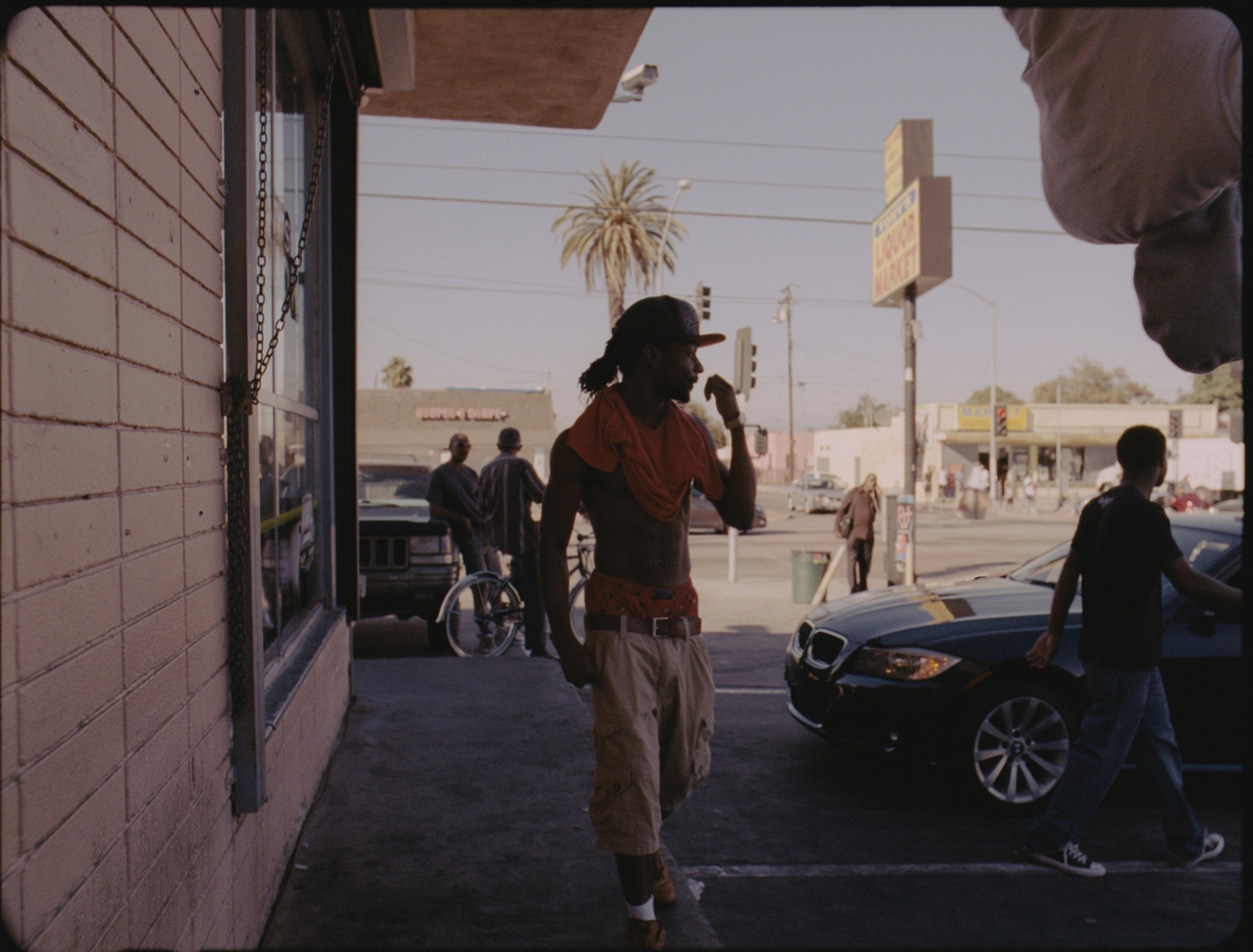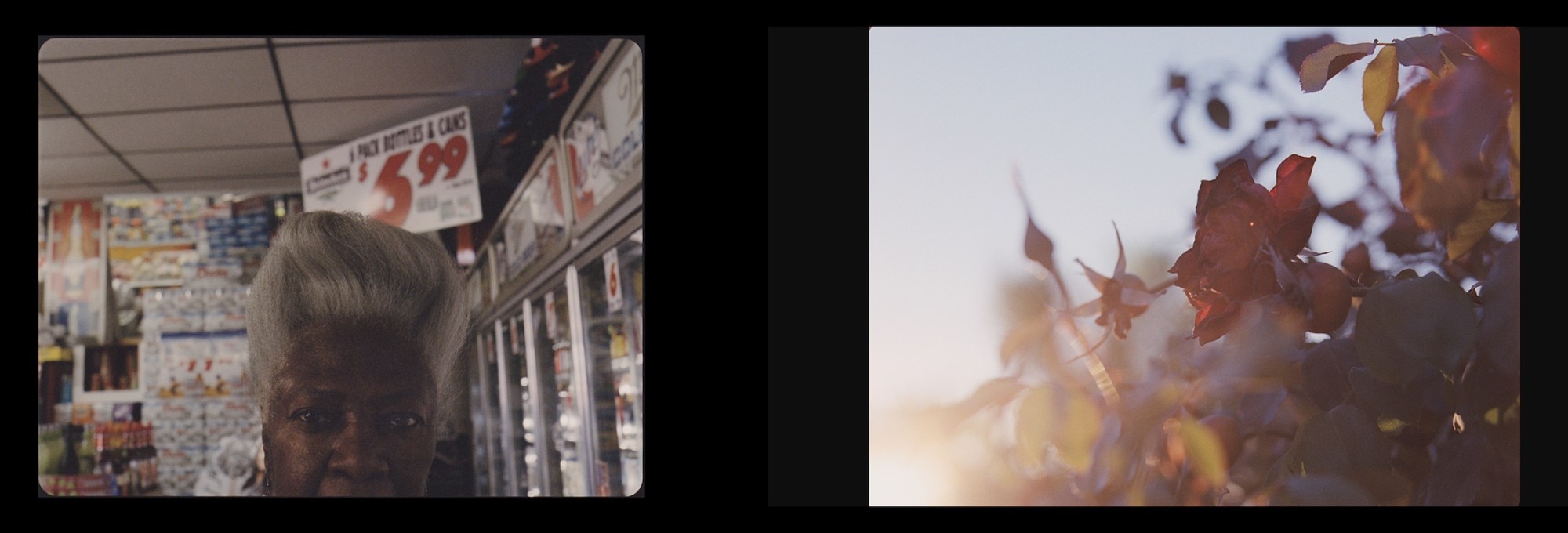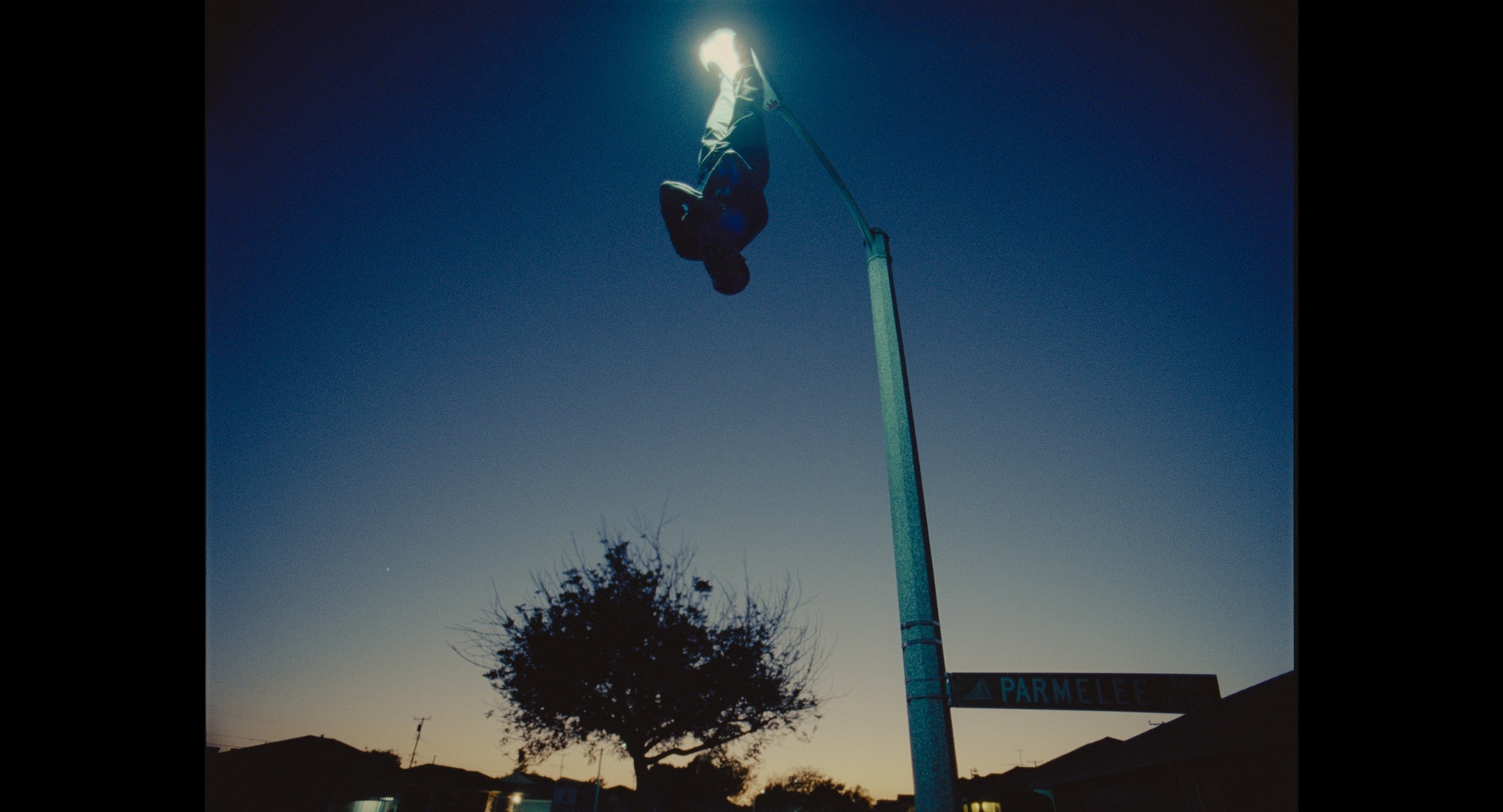Kahlil Joseph is a lot like Martin Margiela. The Seattle-born, LA-based director prefers to keep the focus on his breathtaking body of work rather than his personal life, about which almost nothing is known. That’s fine by us, because Joseph is the brightest music video director since Hype Williams.
He’s the man behind FKA Twigs’ Video Girl, a slew of Shabazz Palaces‘ pieces, and even a fashion film for Kenzo. But (thus far anyway) Joseph’s opus remains Until the Quiet Comes, a short film scored by Flying Lotus’ fourth album. Released in 2012, the piece is an arresting, visually sensuous portrait of life in one of LA’s most well known housing projects, Nickerson Gardens. The film caught the attention of Kendrick Lamar, who then commissioned Joseph to create m.A.A.d, the video that played during the Compton native’s Yeezus tour opening slots.
As Joseph’s installation Double Conscience opens at LA’s Museum of Contemporary Art today, we catch up with the director about race, representation, and the future of rap videos.

How do you choose the musicians you work with?
Grace. It tends to be that they speak to something inside me and the timing and circumstances allow for a collaboration. It’s not a super deep process, but it often feels like it’s larger than me, so I guess it is.
Your work with Kendrick Lamar and Flying Lotus provides a greater context to the music by depicting communities. What draws you to these communities?
Until the Quiet Comes was a combination of Lotus wanting to do an LA video, but not the LA that people were familiar with, as well as my attraction to the black community and the way black people are photographed and filmed. I shoot communities because I think there’s a lot of richness there and a lot of honesty and a lot of pain. It’s interesting how they deal with that pain, it’s been there for centuries. And it’s not fake pain. They mask it with all these layers to the point where they don’t even know what they’re masking.
The Kendrick video, I’m certain, was a result of me having done the Flying Lotus video, because of its impact and because of where I shot it. But I’m not just interested in the hood, not even close. That’s something I’ve been very cognizant of especially after making the Kendrick piece. Most people have probably only heard of me because of Kendrick or Lotus videos, which both take place in the hood. It’s not at all a representation of how I work or how I think, it just happened to be the story both wanted to tell.


What about representations of the black community in film at large?
Almost all histories in black cinema aren’t really representations of us, I think most people who know black people on any level know that to be true. We’ve excelled as a community and as a people and as a culture in every other art form in a way that’s just amazing. There are more black fine artists than there are filmmakers, which is crazy because the fine art world is one of the tightest knit out there. But I think this underrepresentation also an amazing opportunity for us. It’s almost like Silicon Valley in the 80s and 90s: the black community is where all the great ideas are, it’s where the next generation of filmmakers are going to come from, it’s what’s going to save movies. Once we start making movies in the same way that we make music, it’ll be undeniable. Once we’re able to represent ourselves—not even represent ourselves but to express ourselves—in the way that we feel and we think, then I don’t even know what to say. I don’t even know what that’s gonna look like!
Tell us more about your forthcoming exhibition at MoCA.
I first exhibited m.a.a.d at the Underground Museum, in the art show The Oracle curated by Noah Davis. The curators at MoCA, Helen Molesworth and Bennett Simpson, had made visits to see the piece and wanted it for the museum. I’ve had work exhibited in galleries before so it wasn’t a new experience for me, but I think what makes this different is the physicality of the two screens and its presence in a major museum. I’ve always been a fan and paid attention to video art and installations; I know what their potential is, and can be, to communicated ideas and emotion.


You also directed a piece for Kenzo. Did making a fashion film differ from your other work?
When I got the phone call about Kenzo, I didn’t know what the expectations were going to be. When I met the art directors, they were so open to the process. They really gave me space and were so excited about the work I made in the past that they wanted to find a way to truly collaborate. Having studied the clothing house a little bit, I knew that they had dynamic roots, and I felt really comfortable at that point.
Would you make another fashion film? If so, are there any specific designers you’d like to work with?
I’m sure, yeah. I love Margiela and Dries Van Noten, those are the big two whose clothing I like that come to mind. I love those two designers as artists. I’d have loved to do something with Alexander McQueen had he been around. I think his thing is just it: what he represented and how it moved. He was one of the few real rockstars, artists, badasses. He just had this streak in him.

Credits
Text Emily Manning
All images Kahlil Joseph, stills from the film m.A.A.d., 2014, photography by Chayse Irvin, courtesy of the artist.
